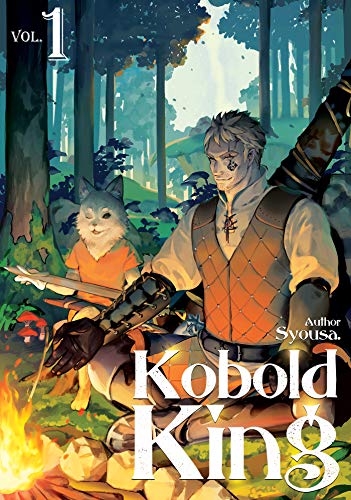By Syousa. and sime. Released in Japan by Legend Novels (Kodansha). Released in North America by J-Novel Club. Translated by Amy Osteraas.
First things first: aside from the very start of this book, it is entirely devoted to warfare, with a large group of adventurers, mercenaries and soldiers marching to wipe out the Kobolds and their allies, and our heroes essentially turning into a jungle-based terrorist group to stop them. If this doesn’t interest you, you are not going to get much out of this book, as the brief characterization we had in Book 1 is left behind for the most part in favor of battle scenes. The good news is that the battle scenes are quite well written, and there’s a definite sense of tension to the whole book. Having killed off one of the main characters in the first volume, the reader is under the assumption that no one is safe. Indeed, while I wasn’t expecting the bad guys to win, I did start to suspect it would be a pyrrhic victory where most of the main cast sacrifice themselves. It comes close. That said, this is marked the end of the first “arc”, so presumably more books are coming.
On one side we have the evil obsessed Wyatt and his suit of magical armor, determined to destroy absolutely everyone on the Kobold side, especially Gaius. He’s attracted most of his force by offer of a large reward, but some others (the ones who were there the first time) he has to blackmail. The force itself is quite well divided between men and women, actually, which surprised and pleased me. Of course, this means that both men and women get their skulls caved in, hearts torn out and heads chopped off, because the mercenary force runs into Gaius and Sashalia’s Kobold guerrilla fighters. They have a force far, far smaller than the army’s, but are fighting for both survival and to make the other side give up and say it’s not worth the trouble. To that end, the Kobolds put out endless dangerous traps, use dirty and underhanded fighting tactics, and also have Gaius, who can kill dozens on his own. All this coordinated by Sashalia, who can no longer fight but can still be a tactician.
While I enjoyed this book, there’s not really much to say about it because it’s almost all action. I was thankful that the whole “I want to be the one to take Gaius’ virginity!” plotline was given barely a passing mention, and indeed there’s no love triangle here as was hinted in the last book, mostly as everyone is too busy fighting. Most of the cast ends up coming pretty close to dying – indeed, I was fairly certain that when Darke was hurled against a tree at full speed that she was dead. I was also certain that Emon was dead when Wyatt basically started hacking him to bits. And I certainly expected Gaius and Wyatt to kill each other in the final battle. Instead, the day is saved by a spirit from the dead returning and giving Gaius one final weapon. It’s unrealistic, but hey, we’ve had realism the whole battle, so I was fine with it.
As with other series from this label, we’re not sure when there will be more of it – it’s only two volumes in Japan for now. Still, if you want to know what Vietnam would have been like with kobolds, elves, dwarves and giant lizard creatures, this is a strong read.


